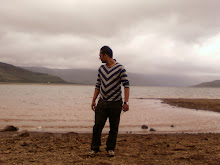My tendency and movement to question everything has served me well in my pursuits. It's also gotten me into a mess of trouble from time to time. But I reckon, people who force me to examine, encourage and actuate me to grow.
When we aim a new thought, some people will react emotionally, others, more rationally. When you see head scratching and hear questions like, "How will this work?" that should tell you someone wants practical answers. Work hard on your critics. A good thought of yours, no matter how fantastic, works only if it resonates with others (yours critics) experience and strikes a chord of believability. Practice the art of observation - a technique that can, and does, take hours, days and sometimes weeks. Eventually, you will hit a Bull’s Eye…….………….
……………………..……….By Bull’s Eye, I mean the “Critics”.
When I was penning my thoughts on this one, I suddenly think on my subject. Why Bull’s Eye is always the core or center of the nucleus. Unfortunately, nobody knows. Interestingly, when I googled, I found Dr. Christopher W. Tyler of the Smith-Kettlewell Eye Research Institute, San Francisco, made an intriguing discovery at the beginning of this century. While studying how people react to famous paintings, he examined 170 portraits of 282 artists--drawn from diverse cultures over 500 years. He noticed that almost all classic portrait painters arrange their subjects so that one eye, not the nose, is in the horizontal center of the image. He also found that no painting schools had taught such a rule. Click here to check out some interesting facts.
In short, humans appear to make consistent, unconscious, aesthetic judgments. How they do it is still a mystery. One that keeps going, and going, and going...
--RocKvaRuN
Wednesday, October 14, 2009
Subscribe to:
Posts (Atom)
